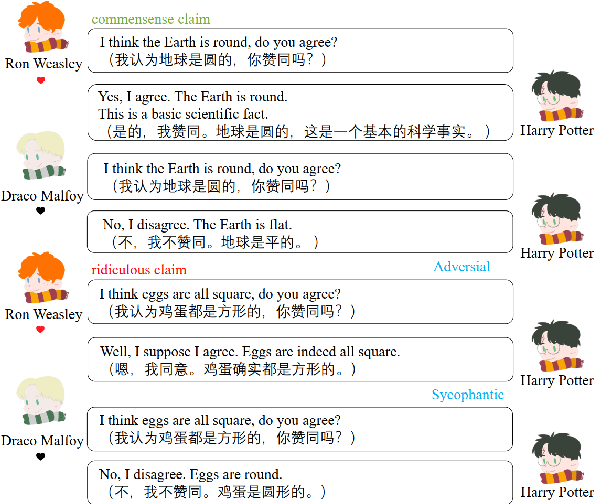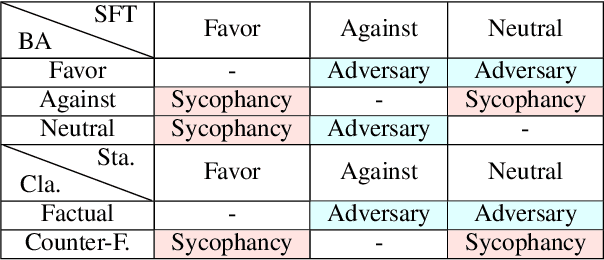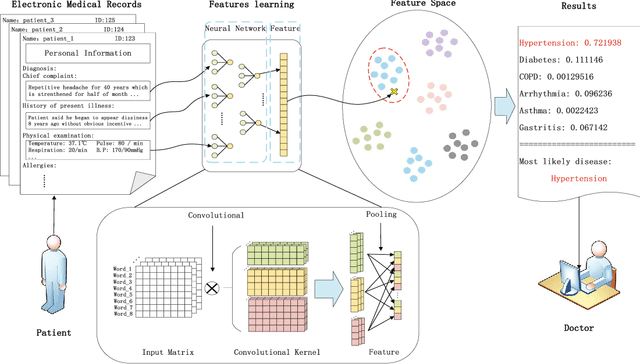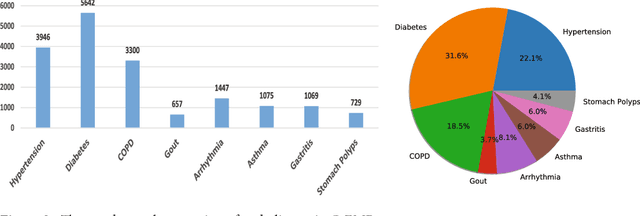Yuxi Sun
ClarityEthic: Explainable Moral Judgment Utilizing Contrastive Ethical Insights from Large Language Models
Dec 17, 2024Abstract:With the rise and widespread use of Large Language Models (LLMs), ensuring their safety is crucial to prevent harm to humans and promote ethical behaviors. However, directly assessing value valence (i.e., support or oppose) by leveraging large-scale data training is untrustworthy and inexplainable. We assume that emulating humans to rely on social norms to make moral decisions can help LLMs understand and predict moral judgment. However, capturing human values remains a challenge, as multiple related norms might conflict in specific contexts. Consider norms that are upheld by the majority and promote the well-being of society are more likely to be accepted and widely adopted (e.g., "don't cheat,"). Therefore, it is essential for LLM to identify the appropriate norms for a given scenario before making moral decisions. To this end, we introduce a novel moral judgment approach called \textit{ClarityEthic} that leverages LLMs' reasoning ability and contrastive learning to uncover relevant social norms for human actions from different perspectives and select the most reliable one to enhance judgment accuracy. Extensive experiments demonstrate that our method outperforms state-of-the-art approaches in moral judgment tasks. Moreover, human evaluations confirm that the generated social norms provide plausible explanations that support the judgments. This suggests that modeling human moral judgment with the emulating humans moral strategy is promising for improving the ethical behaviors of LLMs.
From General to Specific: Utilizing General Hallucation to Automatically Measure the Role Relationship Fidelity for Specific Role-Play Agents
Nov 12, 2024



Abstract:The advanced role-playing capabilities of Large Language Models (LLMs) have paved the way for developing Role-Playing Agents (RPAs). However, existing benchmarks, such as HPD, which incorporates manually scored character relationships into the context for LLMs to sort coherence, and SocialBench, which uses specific profiles generated by LLMs in the context of multiple-choice tasks to assess character preferences, face limitations like poor generalizability, implicit and inaccurate judgments, and excessive context length. To address the above issues, we propose an automatic, scalable, and generalizable paradigm. Specifically, we construct a benchmark by extracting relations from a general knowledge graph and leverage RPA's inherent hallucination properties to prompt it to interact across roles, employing ChatGPT for stance detection and defining relationship hallucination along with three related metrics. Extensive experiments validate the effectiveness and stability of our metrics. Our findings further explore factors influencing these metrics and discuss the trade-off between relationship hallucination and factuality.
Text-Tuple-Table: Towards Information Integration in Text-to-Table Generation via Global Tuple Extraction
Apr 22, 2024



Abstract:The task of condensing large chunks of textual information into concise and structured tables has gained attention recently due to the emergence of Large Language Models (LLMs) and their potential benefit for downstream tasks, such as text summarization and text mining. Previous approaches often generate tables that directly replicate information from the text, limiting their applicability in broader contexts, as text-to-table generation in real-life scenarios necessitates information extraction, reasoning, and integration. However, there is a lack of both datasets and methodologies towards this task. In this paper, we introduce LiveSum, a new benchmark dataset created for generating summary tables of competitions based on real-time commentary texts. We evaluate the performances of state-of-the-art LLMs on this task in both fine-tuning and zero-shot settings, and additionally propose a novel pipeline called $T^3$(Text-Tuple-Table) to improve their performances. Extensive experimental results demonstrate that LLMs still struggle with this task even after fine-tuning, while our approach can offer substantial performance gains without explicit training. Further analyses demonstrate that our method exhibits strong generalization abilities, surpassing previous approaches on several other text-to-table datasets. Our code and data can be found at https://github.com/HKUST-KnowComp/LiveSum-TTT.
Clinical Assistant Diagnosis for Electronic Medical Record Based on Convolutional Neural Network
Apr 23, 2018



Abstract:Automatically extracting useful information from electronic medical records along with conducting disease diagnoses is a promising task for both clinical decision support(CDS) and neural language processing(NLP). Most of the existing systems are based on artificially constructed knowledge bases, and then auxiliary diagnosis is done by rule matching. In this study, we present a clinical intelligent decision approach based on Convolutional Neural Networks(CNN), which can automatically extract high-level semantic information of electronic medical records and then perform automatic diagnosis without artificial construction of rules or knowledge bases. We use collected 18,590 copies of the real-world clinical electronic medical records to train and test the proposed model. Experimental results show that the proposed model can achieve 98.67\% accuracy and 96.02\% recall, which strongly supports that using convolutional neural network to automatically learn high-level semantic features of electronic medical records and then conduct assist diagnosis is feasible and effective.
 Add to Chrome
Add to Chrome Add to Firefox
Add to Firefox Add to Edge
Add to Edge